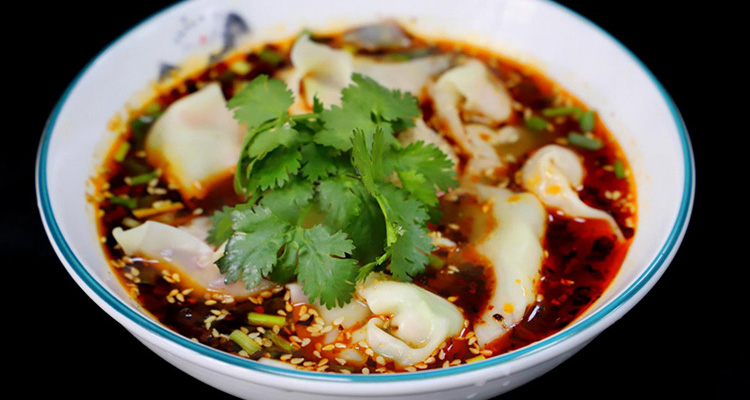Yunyang Baomian: Chongqing’s Ultra-Thin Dumplings
In Chongqing, a city famous for hot pot and bold flavors, Yunyang Baomian offers a gentler, refined local taste. Not a standard wonton, Baomian is a century-old handmade specialty from Yunyang County with wafer-thin skins, savory pork filling, and a clear pork-bone broth. It’s a perfect counterpoint to Chongqing’s fiery cuisine and a must-try for visitors seeking authentic Chongqing street food.
1. Origin and History: A “Baomian Boat” from the Ming and Qing
Yunyang Baomian traces its roots to the Ming and Qing dynasties. It began at the Yunyang river port on the upper Yangtze, where boatmen, merchants, and dockworkers needed quick, filling, and affordable food. Small, boat-like dumplings—nicknamed “baomian boats”—became popular among laborers and travelers. Over centuries the recipe evolved but kept its core: thin translucent skins, hearty pork filling, and a clear, slowly simmered broth. Today, Yunyang Baomian is recognized as part of Chongqing’s intangible cultural heritage.
2. Cultural Meaning: A Taste of Home in Everyday Life
In Yunyang, Baomian is more than street food; it’s woven into daily life. It’s a favorite breakfast, a late-night comfort, and a staple at family gatherings and festivals. For people from Yunyang, a bowl evokes deep nostalgia—memories of hometown mornings and simple family meals. Compared to hot pot’s social, celebratory vibe, Baomian feels intimate and homey—Chongqing’s softer, family-oriented side.

3. Ingredients and Craft: Skilled Hands and Quality Produce
Yunyang Baomian’s distinctive flavor comes from careful ingredient selection and skilled handwork.
- Dough: The skin must be as thin as a cicada’s wing. High-gluten flour mixed with eggs and water is kneaded, rested, and rolled repeatedly until paper-thin and almost translucent—an exacting skill that showcases the maker’s craft.
- Filling: Typically made from fatty-and-lean pork from the front leg, hand-chopped to preserve texture. Ginger, green onion, white pepper, cooking wine, and a touch of starch are mixed in and beaten in one direction to make the filling firm and springy.
- Broth: The soul of the bowl. Fresh pork leg bones are simmered slowly for hours until the soup is clear, fragrant, and rich. Skimming off scum during the simmering keeps the broth pristine—this clarity defines an authentic bowl.
4. Flavor and Texture: A Layered Tasting Experience
Authentic Yunyang Baomian emphasizes “thin skin, tender filling, fresh broth.”
- Appearance: After boiling, the translucent skins reveal the pinkish pork inside, like blossoms opening in clear soup—very inviting.
- Taste: The skin delivers a silky chew; a gentle bite releases the pork’s juicy, savory juices. Aromatic seasonings blend into a satisfying but never greasy flavor. A sip of the pork-bone broth completes the experience—clean, warming, and deeply comforting.

5. How to Eat It: Local Serving Tips
Enjoying Baomian is a small ritual:
- Classic assembly: Shops often prepare bowls with soy sauce, rendered pork fat, ground Sichuan pepper, chopped green onion, and cilantro at the bottom. Pour the freshly boiled Baomian and broth into this base so the pork fat melts and fragrance rises.
- Customize: While the dish is prized for its clarity, Chongqing diners frequently add chili oil for heat or a splash of vinegar for tang. Try a sip of the original broth first, then experiment with chili oil or vinegar to experience different flavor layers.
6. Traveler Tips: Find the Most Authentic Bowls
- Where to look: The best Baomian is usually found in long-running local stalls or family-run shops rather than upscale restaurants. Follow locals to busy shops with steady queues—this is the most reliable sign of authenticity.
- Best times: Baomian works as both a hearty breakfast and a soothing late-night snack. Early morning and late evening are prime times to taste freshly made bowls.
- Nearby attractions: Yunyang County is also home to natural sights like the Yunyang Longgang National Geopark with karst scenery and glass bridges. Pair a scenic day with a local Baomian meal for a full regional experience.

7. Home-Friendly Version: Recreate the Flavor
If you fall for the taste, try a simplified home version:
- Shortcuts: Use very thin commercial wonton wrappers, and season ground pork with ginger, soy sauce, cooking wine, and a pinch of sugar. For broth, use a good-quality pork stock cube or concentrate if you can’t simmer bones for hours.
- Quick steps: Fill wrappers, seal, and boil until they float plus one minute. Prepare a bowl with soy, a little rendered pork fat or sesame oil, ground pepper, green onion, and cilantro. Add the boiled Baomian and hot broth. Adjust with chili oil or vinegar as desired.
Yunyang Baomian is more than a snack—it’s a cultural bite of Chongqing’s riverside history and family life. When you visit Chongqing, after the fiery hot pot, slow down and seek a bowl of Yunyang Baomian. Let its ultra-thin skin, savory pork filling, and clear pork-bone broth tell you a story of craft, portside life, and generations of flavor.


